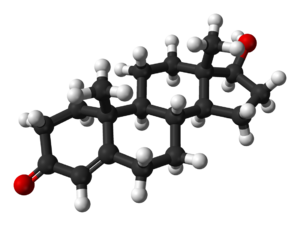Testosterone is the anabolic steroid that separates the men from the boys and girls, improves heart health, increases bone density, muscle mass, keeps the old mojo working and helps beat fat. It’s produced by the testicles, the ovaries (although you probably don’t have to worry about these) and the adrenal gland. Although women do produce testosterone as well, men produce more and also have a heightened ability to consume it – so our levels are roughly 20 times higher than women’s.
Your testosterone has been fighting a losing battle to get round your body and where it should go – pretty much ever since your body decided to grow a pair. And as we get older, it becomes more and more of a struggle for any testosterone to make it to where it’s needed. Without going into too much detail, those seven or so milligrams of testosterone we produce on an average day have to make it through our bloodstream without getting neutralised by certain pesky substances.
For example, there’s aromatase, which converts testosterone into what you could call the female equivalent: estrogen. It’s been reported that these days the average 54-year-old man has more estrogen floating around inside than the average 59-year-old woman, which may be all well and good in these days of equality, but estrogen tends to clog up those receptor cells in our brain that send the signal out to start the production of more testosterone.
In short, every average day sees up to 90% of the testosterone we produce getting deactivated. So depending on your age – where is your testosterone production at?
In our twenties, we should have got over those puberty blues but without dropping too much in the way of testosterone production. Unless there’s more round the midriff than absolutely necessary (as in not being able to see the family jewels without leaning over a bit).
In our thirties – now life is a bit more serious, what with mortgages, families and the like – testosterone levels start dropping at the rate of about one percent a year. So building or maintaining muscle gets a bit more difficult. It’s been calculated that you could lose up to ten pounds of muscle before you hit forty.
In our forties, that dropping testosterone level can bring on symptoms like lethargy, reduced strength, libido loss and, not unsurprisingly, depression. We may even suffer from that well-known midlife crisis where the only solution is to buy a sports car, grab the nearest available blonde and go on a road trip to relive those halcyon days of high testosterone levels. Or, more practically, just stay home and dream about doing so.
Our fifties are a prime time for accelerated muscle loss, unless we start exercising properly. It’s also the age when our metabolic rate decreases, our general level of fat increases (especially round the abdomen) and then, of course, there’s the risk of heart disease, diabetes and high blood pressure. Not good.
When we reach our sixties and beyond, our testosterone levels will have dropped by up to 30%, leading to a significant decrease in muscle mass, bone density and red blood cells.
So what’s the best way to minimise testosterone loss? By keeping aromatase levels down, for a start. Remember, that’s the stuff that converts testosterone into estrogen… and it lives in fat cells. Trimming down those fat cells reduces the aromatase that neutralises testosterone. Added advantage? There’s less estrogen blocking up those receptor cells that send out the signal to start producing more testosterone.
So if you ever needed a powerful incentive to shed a few of those surplus pounds, how about keeping those testosterone levels topped up? It’ll keep you beefy, manly and despite your mother’s claims that it’s eating your crusts – testosterone will actually put hairs on your chest. Grrrrrr.




